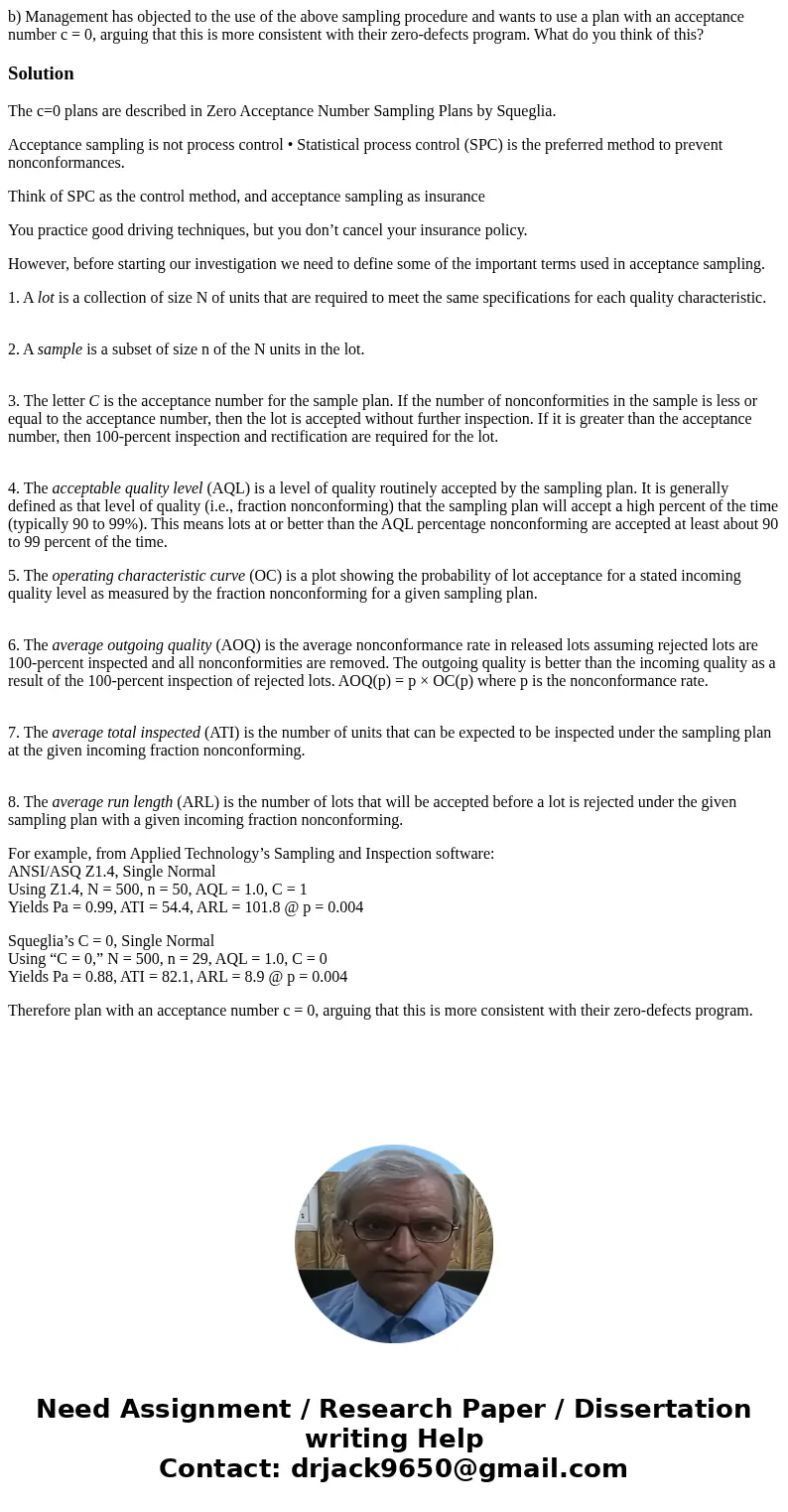b Management has objected to the use of the above sampling p
b) Management has objected to the use of the above sampling procedure and wants to use a plan with an acceptance number c = 0, arguing that this is more consistent with their zero-defects program. What do you think of this?
Solution
The c=0 plans are described in Zero Acceptance Number Sampling Plans by Squeglia.
Acceptance sampling is not process control • Statistical process control (SPC) is the preferred method to prevent nonconformances.
Think of SPC as the control method, and acceptance sampling as insurance
You practice good driving techniques, but you don’t cancel your insurance policy.
However, before starting our investigation we need to define some of the important terms used in acceptance sampling.
1. A lot is a collection of size N of units that are required to meet the same specifications for each quality characteristic.
2. A sample is a subset of size n of the N units in the lot.
3. The letter C is the acceptance number for the sample plan. If the number of nonconformities in the sample is less or equal to the acceptance number, then the lot is accepted without further inspection. If it is greater than the acceptance number, then 100-percent inspection and rectification are required for the lot.
4. The acceptable quality level (AQL) is a level of quality routinely accepted by the sampling plan. It is generally defined as that level of quality (i.e., fraction nonconforming) that the sampling plan will accept a high percent of the time (typically 90 to 99%). This means lots at or better than the AQL percentage nonconforming are accepted at least about 90 to 99 percent of the time.
5. The operating characteristic curve (OC) is a plot showing the probability of lot acceptance for a stated incoming quality level as measured by the fraction nonconforming for a given sampling plan.
6. The average outgoing quality (AOQ) is the average nonconformance rate in released lots assuming rejected lots are 100-percent inspected and all nonconformities are removed. The outgoing quality is better than the incoming quality as a result of the 100-percent inspection of rejected lots. AOQ(p) = p × OC(p) where p is the nonconformance rate.
7. The average total inspected (ATI) is the number of units that can be expected to be inspected under the sampling plan at the given incoming fraction nonconforming.
8. The average run length (ARL) is the number of lots that will be accepted before a lot is rejected under the given sampling plan with a given incoming fraction nonconforming.
For example, from Applied Technology’s Sampling and Inspection software:
ANSI/ASQ Z1.4, Single Normal
Using Z1.4, N = 500, n = 50, AQL = 1.0, C = 1
Yields Pa = 0.99, ATI = 54.4, ARL = 101.8 @ p = 0.004
Squeglia’s C = 0, Single Normal
Using “C = 0,” N = 500, n = 29, AQL = 1.0, C = 0
Yields Pa = 0.88, ATI = 82.1, ARL = 8.9 @ p = 0.004
Therefore plan with an acceptance number c = 0, arguing that this is more consistent with their zero-defects program.

 Homework Sourse
Homework Sourse